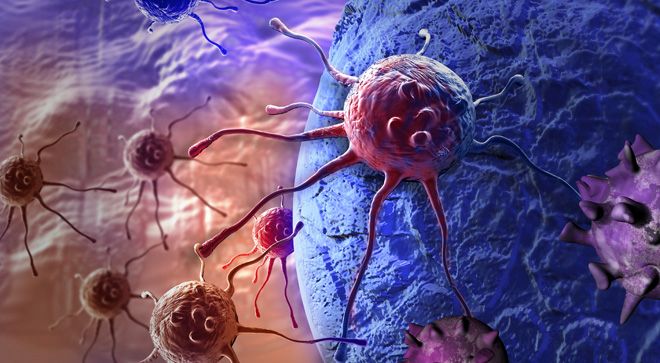Article
The Importance of Neuroendocrine Tumor Imaging
Author(s):
Catching tumors through imaging at an early stage can help guide treatment decisions and may improve a patient’s quality of life — which is why it’s important for patients to stay educated on their options.
Several imaging tools including positron emission tomography (PET) can aid in diagnosing neuroendocrine tumors sooner, which can lead to improved treatment decisions, an expert said.
Dr. Giuseppe Esposito, chief of nuclear medicine and professor of radiobiology at MedStar Georgetown University Hospital in Washington, D.C., presented on the management of imaging neuroendocrine tumors at the 12th Annual Ruesch Center Symposium. CURE® also spoke with him to learn more about what this information for patients.
Understanding Imaging
Although Esposito’s presentation primarily focused on PET, he noted that there are three different kinds of imaging scans: computed tomography (CT), magnetic resonance imaging (MRI) and PET. Together, these tools help to identify the tumor at an earlier stage and guide treatment decisions, he said.
CT and MRI imaging are firstline conventional imaging, Esposito explained, and those can often tell the cancer team the size of the tumor, how many there are and where they are. This information can help a surgeon understand how difficult a surgery will be and if the patient is a surgical candidate depending on the tumor’s location.
PET scans are different, as they can identify receptors that are expressed within tumors. Additionally, it can tell how aggressive the tumor is, its function and its biology, which help guide in deciding what type of treatment to use, he said.
Imaging is important for not only understanding the tumor, but also catching it and treating it early, which Esposito mentioned can improve a patient’s quality of life.
“If the tumor is found earlier with more accurate imaging, yes, then the overall quality of life in the future for the patient is going to be better. It’s usually the case, if we find the tumor earlier, then the treatment might be less aggressive (and) the surgery will be less extensive. So the overall quality of life of the patient is probably going to be better,” he explained.
Most patients are able to undergo imaging through an MRI or CT scan, although the few exceptions include if a patient is allergic to the contrast dye in the CT scan or if they are too claustrophobic for an MRI. In addition, there are typically no negative reactions to PET scans.
“Obviously we do imaging only when it’s clinically indicated. We don’t want to do a CT, MRI or PET just for the sake of doing it, but when there is a clinical need to do it,” Esposito added.
Gaps and Misconceptions
One gap in imaging he mentioned is that there is a lack of knowledge regarding the biology of all tumors. Additionally, some areas of the country might not have CT, MRI or PET scans available for patients; however, these are the only real barriers or limitations right now in imaging, and Esposito mentioned that we are in a lot better spot with it than a few years ago.
“But for now, I think for most of the neuroendocrine tumors, we have a good, combined approach,” he noted.
Many patients may think that PET imaging is dangerous and exposes them to a large amount of radiation, although that is not completely true, Esposito explained. PET imaging is only performed when it is necessary — usually only every three months or so — and the level of radiation is not dangerous, he said. Esposito explained that this common misconception can come from a lack of education and awareness for patients on imaging, which is something that is important for patients to focus on.
“I think it is important for patients to be educated in regard to the availability of the characteristics or the type of imaging that one can have or the advancement of imaging because it is always important for the patient to advocate for their own care,” Esposito concluded.
For more news on cancer updates, research and education, don’t forget to subscribe to CURE®’s newsletters here.





